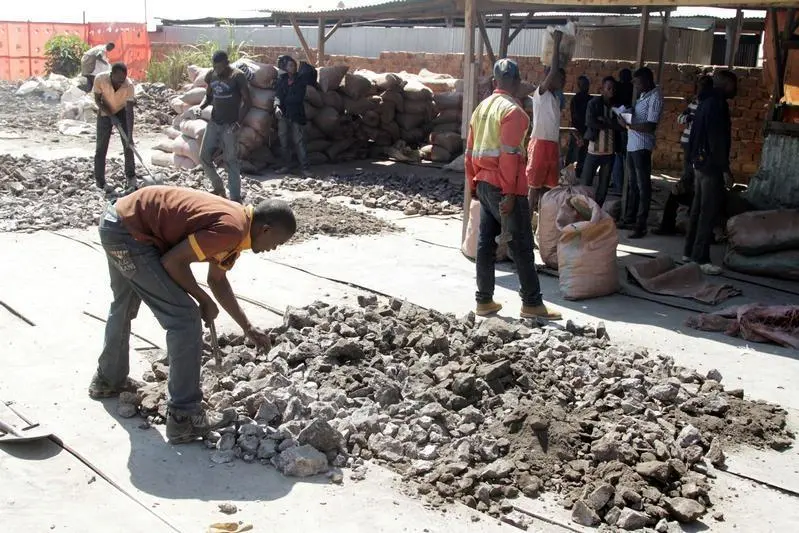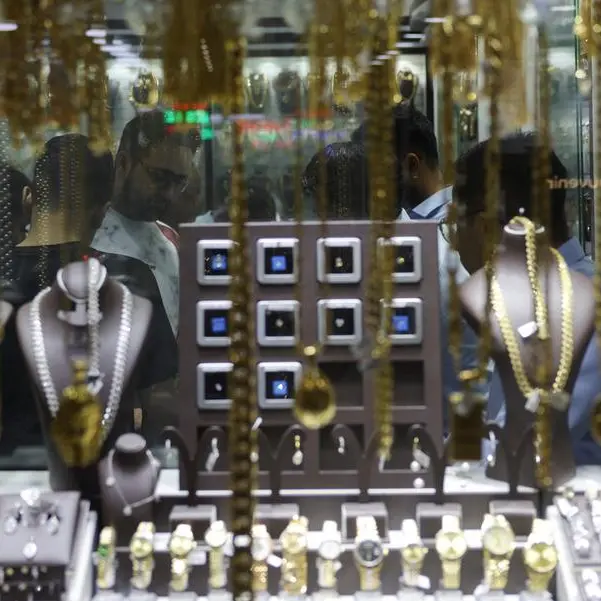PHOTO
LONDON: Cobalt prices have crashed over the last six months with demand growth slowing just as a wave of new supply washes through the market.
After hitting a four-year high of $40 per lb in May last year, cobalt has slumped to $17 per lb, extending a long history of boom-and-bust price cycles.
There were hopes that this time might be different, thanks to rising demand from the electric vehicle (EV) sector but not all battery inputs are equal when it comes to the bullish narrative around "green" metals.
Cobalt has lost share to lithium as the Chinese EV market in particular pivots towards non-cobalt battery chemistry.
Fears of under-supply have been replaced by expectations of surplus over the coming years.
The abrupt turnaround in both narrative and price has led to a surge in trading activity on the CME cobalt contract as producers and consumers respond to the shifting landscape.
CHANGE OF GEAR
Cobalt's fortunes are still tied to the EV sector but the relationship is changing.
Sales of new energy vehicles rose by 56% year-on-year in the fourth quarter of 2022 and usage of cobalt in EV batteries jumped by over 60% over the full year, according to the Cobalt Institute's latest quarterly report.
That eye-watering growth rate would be stronger still were it not for a shift towards non-cobalt battery chemistries, led by China, the world's largest EV market.
Lithium-iron-phosphate (LFP) batteries now represent around 30% of the total market, a share that is likely to grow as auto-makers seek to lower costs in an increasingly competitive arena.
The changing mix of chemistries explains why lithium prices are still holding their highs while cobalt prices have been on the slide.
Cobalt usage has also been dented by falling sales of electronic items such as mobile phones and a slow COVID recovery in the aerospace sector.
Overall demand growth fell sharply to 7.8% last year from 19.3% in 2021 and will likely slow again to 5.9% this year, according to Macquarie Bank. ("Commodities Compendium", Dec. 8, 2022)
Supply, by contrast, is growing fast thanks to restarted capacity in the Democratic Republic of Congo and a new generation of Indonesian nickel plants producing cobalt as a by-product.
The status of the giant Tenke Fungurume mine in the Congo is a supply wild card. Operations are continuing for now but exports remain blocked by a dispute between state mining company Gecamines and China's CMOC Group.
A closure of Tenke, which produced 18,500 tonnes of cobalt in 2021, would be price supportive in the short term but the longer-term picture is one of accumulating supply surplus, according to Macquarie.
COBALT FUTURES TAKE OFF
One beneficiary of this turnaround in cobalt market dynamics has been the CME, which has seen activity in its cobalt contract mushroom since the middle of last year.
CME wasn't the first exchange to launch a cobalt contract. The London Metal Exchange (LME) got there first with a physically delivered contract making its debut as far back as 2010.
Activity grew steadily before peaking in 2018, when concerns emerged that some of the LME's registered cobalt brands were sourced from Congo's artisanal mining sector and associated with human rights abuses.
The issue was the trigger for the LME's move to incorporate responsible-resourcing criteria into all its listed metal brands but the cobalt contract never recovered.
Volumes last year were just 290 contracts and registered stocks have dwindled to 157 tonnes, or just 46 tonnes, excluding metal awaiting physical load-out.
Industrial users seem to have switched en masse to the CME product, launched at the end of 2020 and cash settled against Fastmarkets' assessment of standard-grade metal in warehouse in Rotterdam.
Volumes more than quadrupled to 17,119 contracts last year and January's activity was a fresh monthly record with 5,127 contracts traded.
Open interest has grown exponentially from 2,385 contracts in May last year to 16,970 contracts at the end of January. It's worth noting that open interest is evenly distributed across the curve with positions extending as far forward as December 2025.
It's clear that the May price peak and subsequent price collapse have generated significant hedging activity from both producers and consumers, albeit sometimes indirectly via bespoke structured products with banks and traders.
Given cobalt's history of boom and bust, the emergence of a viable futures market is long overdue.
DIVERGENT DYNAMICS
A CME contract trading against metal in Rotterdam is a very Western pricing solution, not capturing the massive flows of cobalt intermediate products from both the Congo and Indonesia to China.
But Chinese and Western cobalt markets are diverging.
While LFP batteries take a growing slice of China's EV market, Western automakers are still leaning heavily towards chemistries that include both nickel and cobalt for improved power efficiency.
However, many Western carmakers are highly wary of using Congolese cobalt in their products for fear their prized branding will be associated with the child labour.
There is potential for the global cobalt market to be in structural oversupply but for Western markets to be short of socially acceptable metal.
Government stimulus, whether it be the Inflation Reduction Act in the United States or the REPowerEU programme in Europe, will further accelerate EV demand whilst limiting import sources for battery inputs as both regions try and cut dependence on China.
The global scramble for cobalt is clearly over for now but the Western scramble may just be starting.
The opinions expressed here are those of the author, a columnist for Reuters.
(Editing by Bernadette Baum)





















